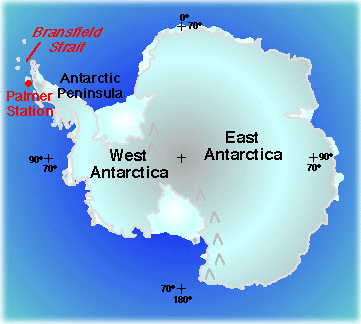
|


Connect to the TEA Streaming Audio Web Page  Steve is a science teacher at Lincoln High School in Wisconsin Rapids where he teaches Chemistry and Physics. He was one of four TEA teachers to Antarctica in 1995. He parcticipated in a six week research cruise aboard the N.B. Palmer in the Bransfield Strait along the Antarctic Peninsula. Future excursions to Antarc tica are not on the immediate horizon, but he would jump at the opportunity to visit the ice again. For him it was an experience that changed him as a teacher, husband, friend and person. The ice changes people. Steve has a wife and young son who keeps them both very busy. Steve and his family enjoy traveling and summer and winter recreational activities like snow skiing and bicycling. Their family also includes a Border Collie who loves to herd their son. Future excursions to Antarctica are not in the near future, but he would love to go! In addition to his teaching duties, Steve also is the boys and girls cross country coach and helps in the spring with boys and girls track. He is also involved with the schools computer committee and manages the public and science areas of the schools web page. His background was originally in Biology. He is currently working to complete a Masters degree in Physics and has completed the undergraduate requirements for a major in Chemistry. He tries to maintain a balance between family and his teaching vocation, although summers are filled with classes and conferences. Steve is a member of the GLACIER curriculum development team and is also the Teacher facilitator for the teachers going to Antarctica.  Geologic Evolution of the Antarctic Peninsula/Scotia Sea Region Principal Investigator: Lawrence A Lawver, University of Texas at Austin
My project involved investigating marine geophysics, so the research team worked onboard the Research Vessel Ice Breaker Nathaniel Palmer. We studied the recent (geologically speaking, that is!) tectonic history in the Antarctic Peninsula region - how the Earth's crust is being deformed, destroyed and created at tectonic plate boundaries. To do this, we needed to "see" the ocean floor. We used instruments that employ sound waves to create images of the sea floor, making very detailed maps of surface features. We also examined the layering in Earth's crust below the sea floor, also using sound waves. At lower frequencies, they penetrate the bottom and bounce off internal strata. As the returning sound waves are detected, they are used to build a picture of features we cannot see directly. |



